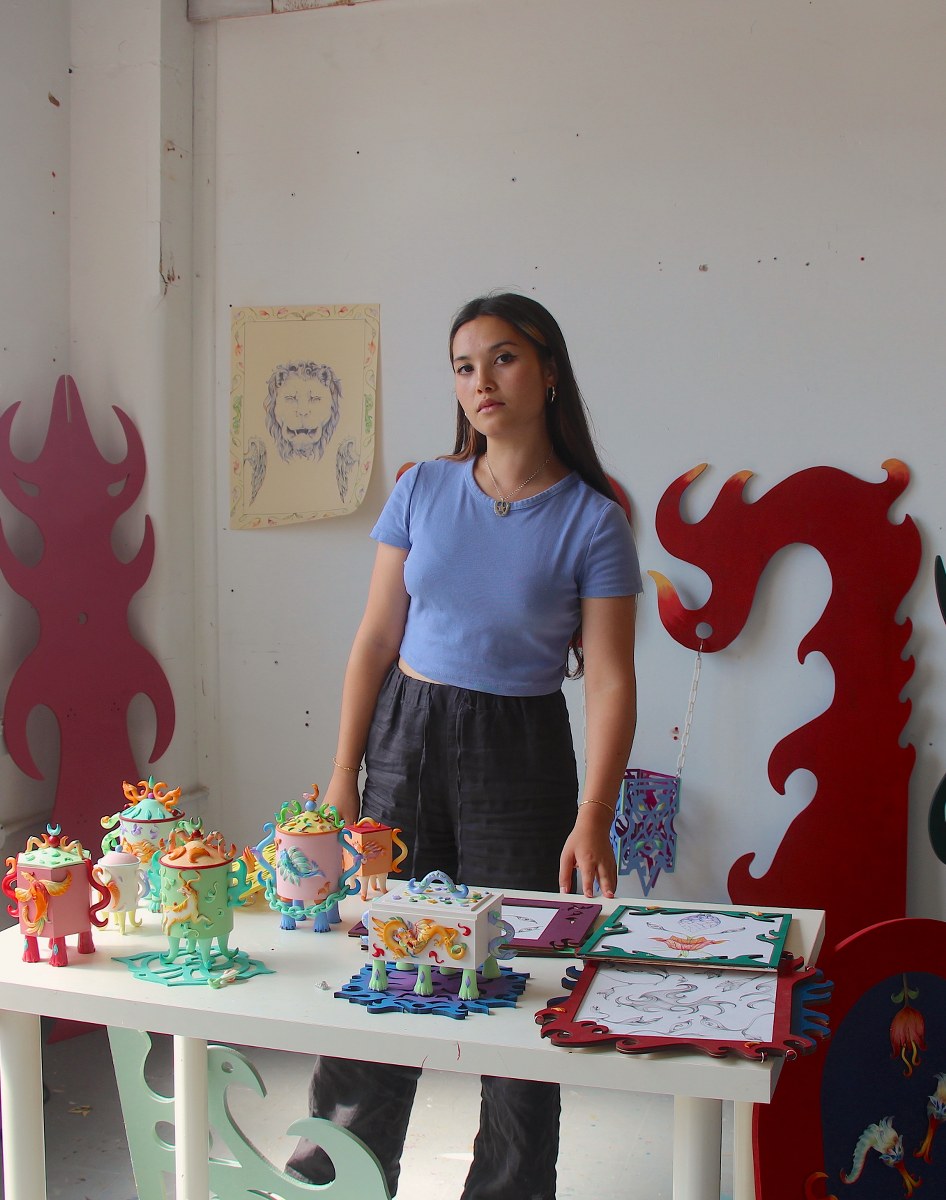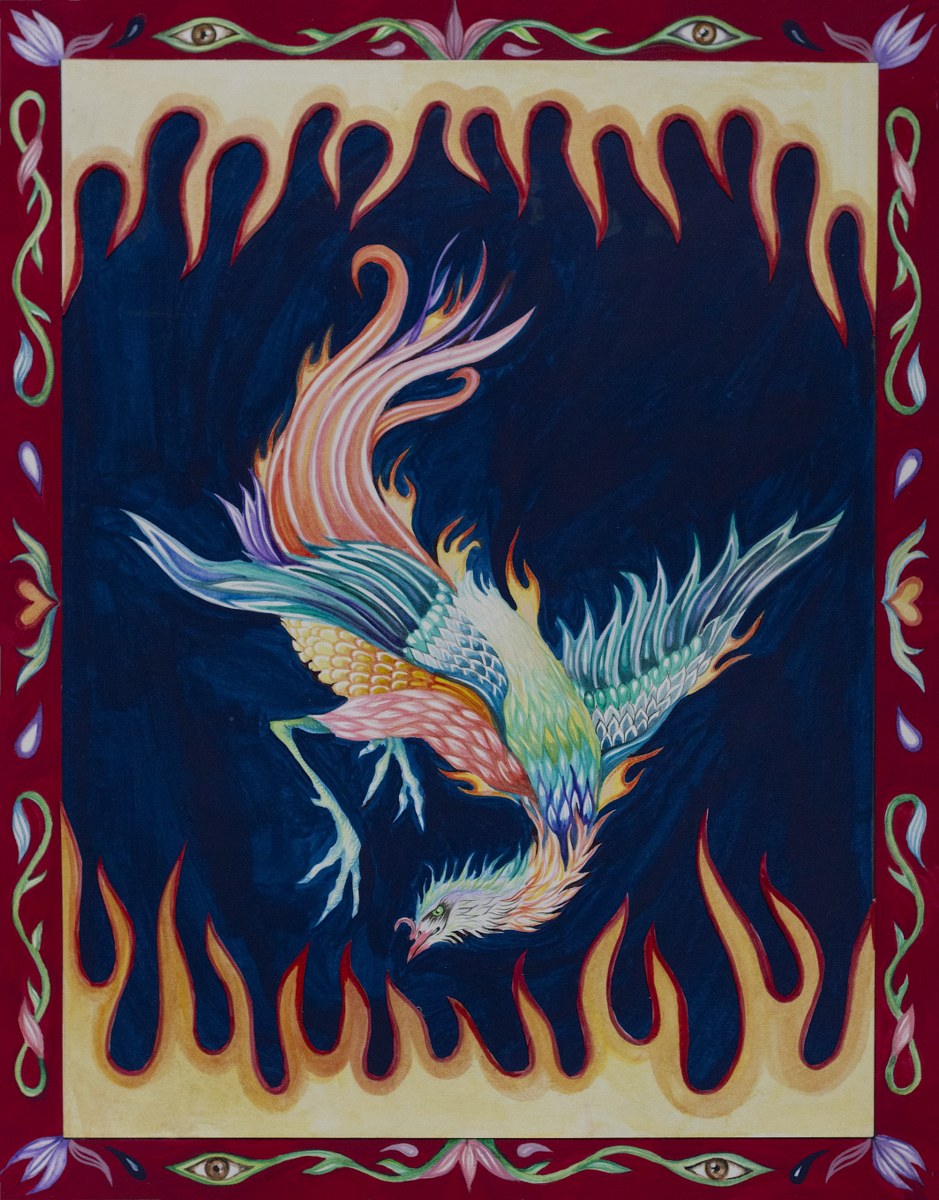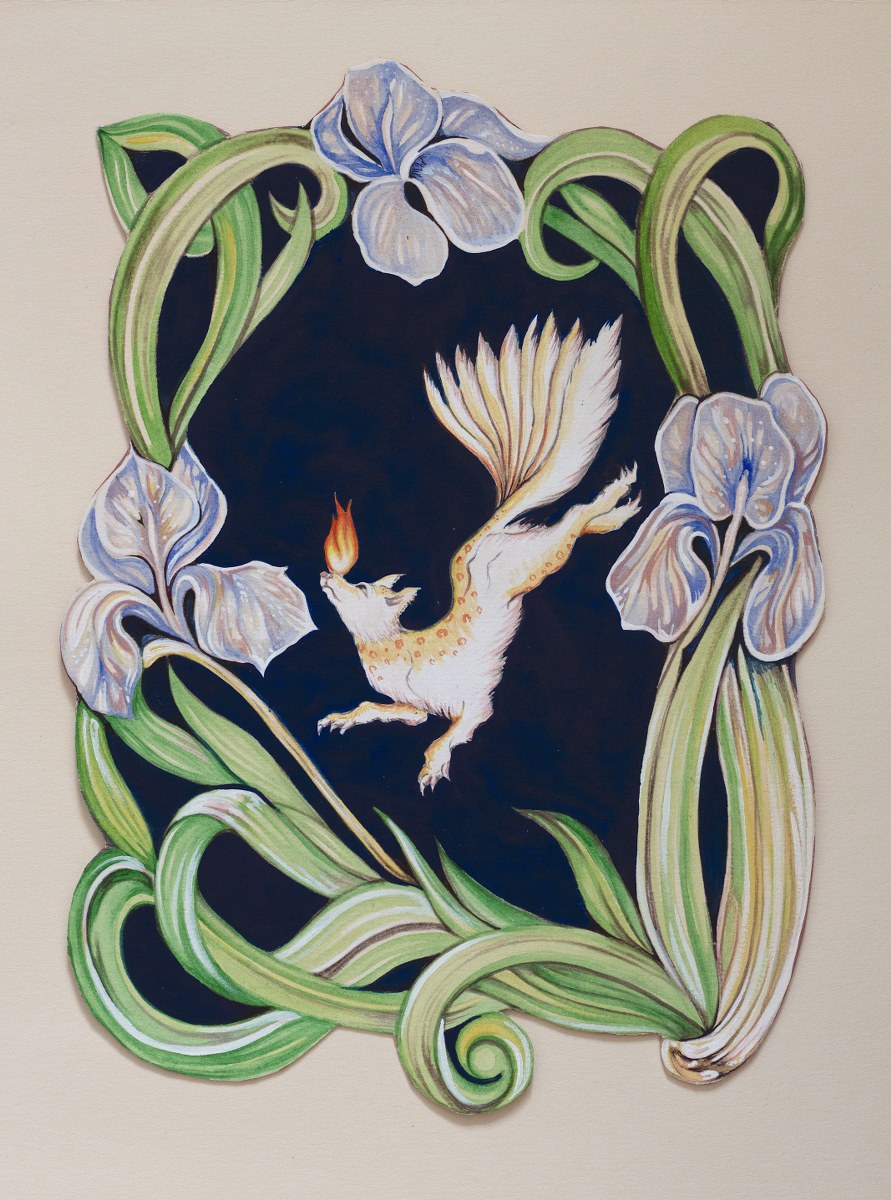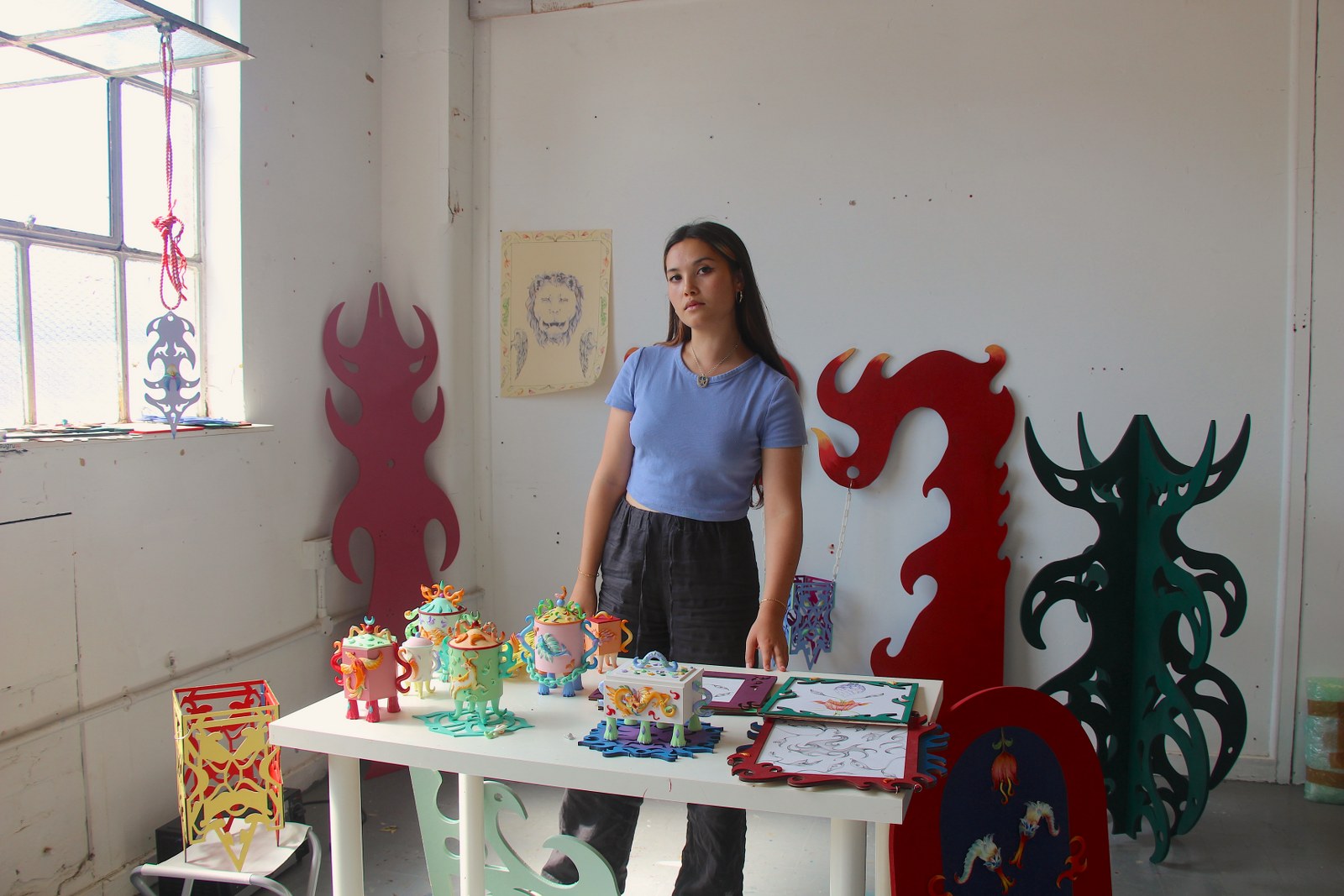Inside the Artist’s Studio: Where Heritage Meets Artistic Exploration
Meet Hannah Lim, the artist whose canvas is as diverse as her heritage. Bridging the gap between her Singaporean and British roots, she offers an intimate look into the world of Chinoiserie, with its rich history and vibrant palette. Through her evocative, larger-than-life snuff bottle sculptures and profound reflections on East/South East Asian femininity, she crafts a narrative that’s both deeply personal and universally resonant.
From her hands-on experience at Pangolin London, pushing the boundaries of metal sculpting, to her forays into the intricate world of ornamentation, there’s a story behind every brushstroke and chisel mark. And as she gears up for her upcoming exhibitions in New York and Milan, the anticipation is palpable. So, pull up a chair, and let’s delve deep into her artistic odyssey, enriched with cultural insights, personal anecdotes, and a passion that’s simply contagious.
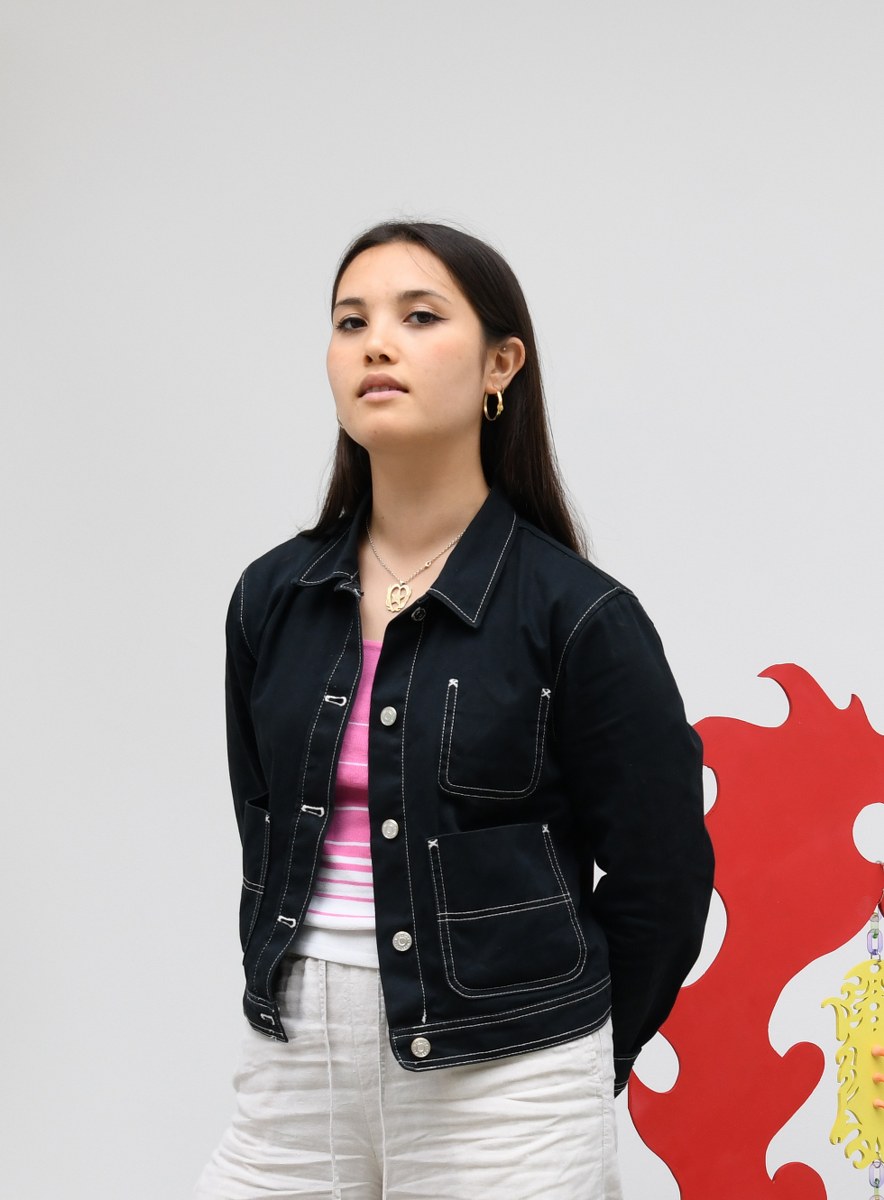
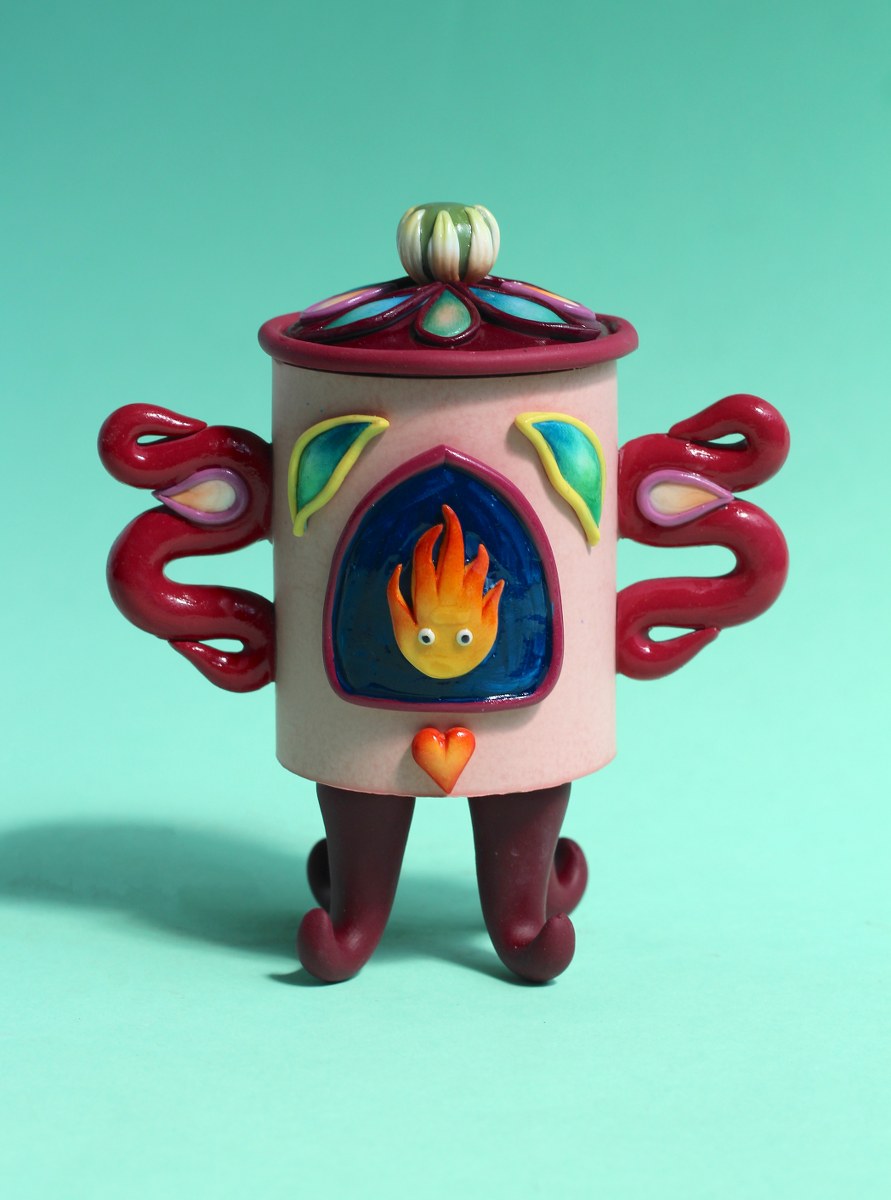
Much of your work delves into the confluence of your Singaporean and British heritage. Can you elaborate on the personal journey you undertook in discovering and reconciling these facets of your identity, and how this manifests in your work, especially in the Bestiaries exhibition? Chinoiserie reflects a kind of exoticism from an 18th-century European perspective. In modernising it, do you see your work as a way to reclaim or perhaps correct historical misunderstandings or appropriations of Chinese aesthetics?
I’ve always been interested in using my practice as a way to connect and explore my mixed Chinese-Singaporean and British heritage. A few years ago I became fascinated by the design style Chinoiserie; an 18th-century aesthetic trend in which elements of Chinese design were recreated in relation to European aesthetics and tastes. Whilst I was intrigued by the exuberant, ornamental and fantastical nature of Chinoiserie I was also aware of its colonial history and its similarities to cultural appropriation. I wanted to reimagine Chinoiserie in a more appropriate way. Using the practice as a means to explore and reflect upon my own mixed cultural identity, whilst cherishing its extravagance and vibrance. Cultural designs are shared as opposed to appropriated within my work.
From this initial interest I begun creating a series of large scale furniture-like sculptures inspired by the creaturely and iconographic aesthetic of Chinoiserie. These sculptures were both functional and ornamental in their design and appearance. This initial point of interest has further influenced my smaller snuff bottles and now my paintings and drawings too. Whilst the works in ‘Bestiaries’ are particularly inspired by my research into Chinese mythology, the works have also evolved and developed from this initial interest in Chinoiserie
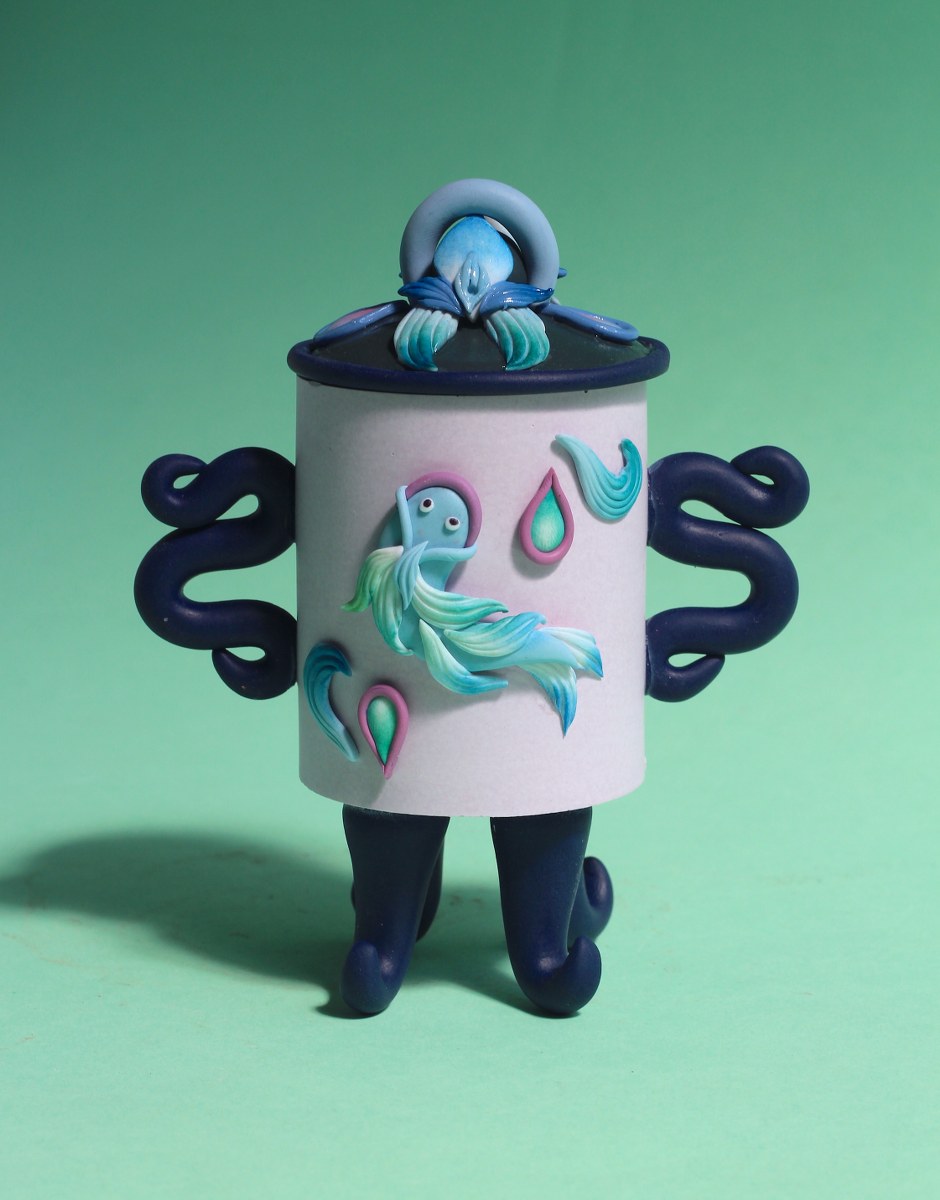
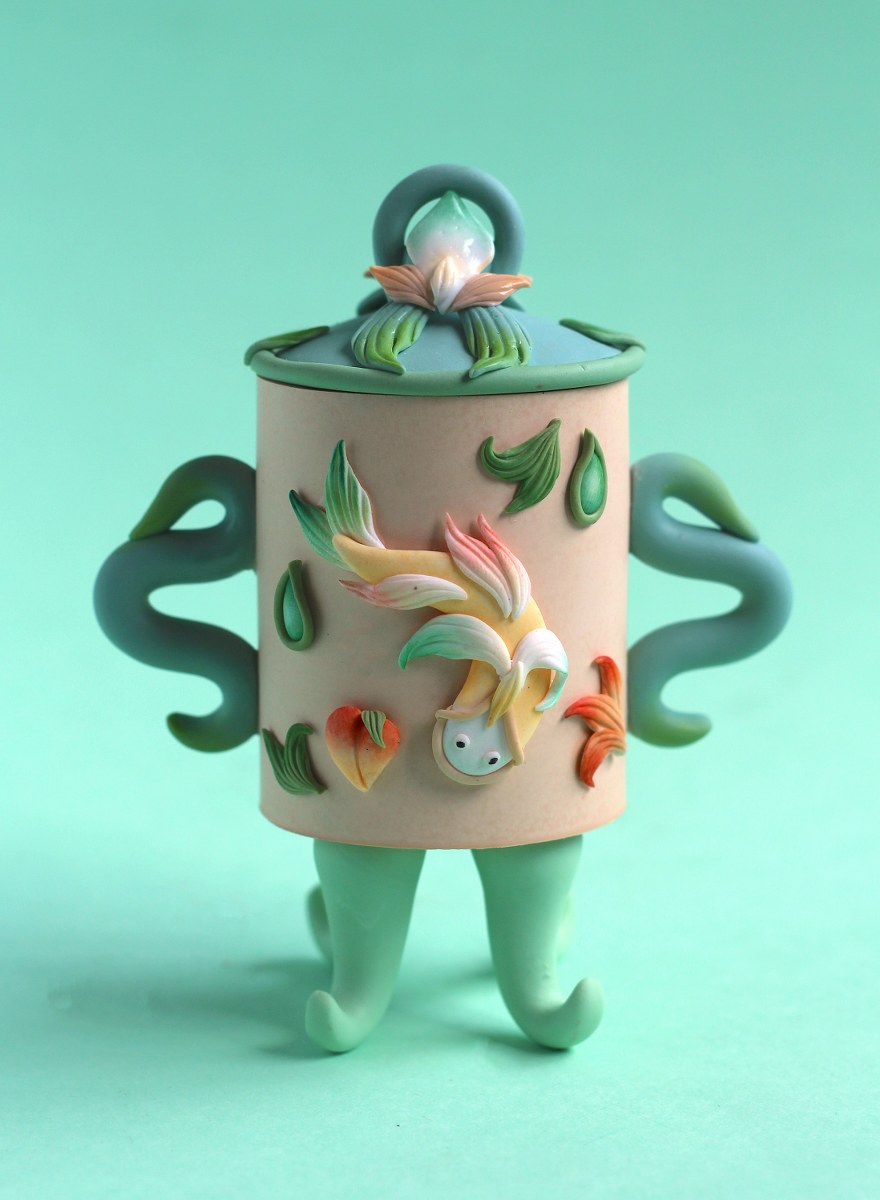
Your snuff bottle sculptures are larger-than-life, anthropomorphised, and inspired by ancient Chinese texts. How do you decide on the narratives or stories that each individual piece will tell?
My first snuff bottles were designed in a way to memorialise certain aspects of my heritage, overtime they’ve come to reflect different points in my research. Currently, my snuff bottles designs have been particularly inspired by imagery and creatures found within both ancient Chinese and Medieval bestiaries. I’ve become quite interested in lacing together imagery and stories of different creatures and beasts that exist, often in quite similar forms, in both Medieval and Ancient Chinese bestiaries. These included dragons and phoenixes. My designs are inspired by the folklore and symbolism attached to these creatures, as well as their different cultural interpretations. Exploring these different cultural intersections has influenced many aspects of my work and stems back to my interest in exploring my own mixed cultural identity and heritage.
How do the themes from ‘The Classics of Mountains and Seas’ and Pu Songling’s ‘Tales of a Chinese Studio’ shape your perceptions of mythology, and how do you go about integrating such vast historical materials into your work?
I became particularly drawn to texts such as ‘The Classics of Mountains and Seas’, which relate to Chinese mythology, as it was something that I didn’t have a good understanding of having grown up in the UK. I was intrigued particularly by the detailed alchemic and poetic descriptions of all the mythological animals within ‘The Classics of Mountains and Seas’ and wanted to reimagine these creatures in a new colourful way – illustrations of most of the creatures within the text are depicted in a series of beautiful black and whiteprints, often woodblock prints.
Anne Anlin Cheng’s ‘Ornamentalism’ seems to have a profound influence on your creations. Can you explain the significance of portraying East/South East Asian femininity as inherently ornamental, especially in the context of your personal experiences and challenges with mixed cultural identity?
Most recently I’ve begun to consider the relationship between ornament and Orientalism. I was introduced to ‘Ornamentalism’, a feminist theory for East/South East Asian personhood developed by Anne Annlin Cheng. Cheng’s Ornamentalism explores the ‘representation and ontology of Asian feminity’, utilising the term Ornamentalism in place of Orientalism, to reflect the way in which ‘Asian feminity’ has historically been defined by its association with ornamental aesthetics; ‘silk, ceramics and other sorts of animated objectness’. I wanted to examine how Cheng’s understanding of E/SE Asian feminism and its association with ornamental materiality and language might affect how I understood my work as a reflection of myself.
What do the ornamental aesthetics of my practice and the ornamental language I use to describe it, suggest about my sense of identity as a British Chinese woman? By researching and reworking the distinctly ornamental and decorative designs of Chinoiserie I’ve been able to reflect on my use of ornamentation and how I have viewed it conversely as means to reclaim and reconnect with my British-Chinese cultural identity. For me, the over – ‘ornamentalisation’ or flamboyance of my work has become a way of pushing against fixed notions of identity and race that are often a point of confusion and struggle for those who come from mixed cultural backgrounds.
There is a vibrant and playful quality to your sculptures, especially with the anthropomorphic elements. What inspired this particular design choice, and how does it correlate with the deeper themes of your work?
I’ve always liked the idea of my sculptures and paintings being quite playful, peculiar and intriguing. I think this playfulness invites people to really investigate the work and engage with it’s cultural context. ‘Ornament’ has always strongly influenced my work, every element of my practice from the snuff bottles to the paintings, embraces decorative detailing, vibrant colours and fantastical imagery. Historically, ornament went through a period of rejection, where it was viewed as being too exuberant and extravagant – I’ve wanted to embrace ornamentation within my work and challenge peoples tastes. I think ornament holds so much cultural history, it’s rich in symbolism and so I feel very strongly about its presence within my practice.
How has your experience as Pangolin London’s artist in residence shaped or evolved your approach to art? Were there any new inspirations or challenges during this period that influenced the works showcased in Bestiaries?
I’ve been working towards an end of residency show that will open next February with Pangolin London. I’ve been doing the residency for the past year, creating a new body of work with the help of the Pangolin Foundry in Stroud. It’s been a really exciting opportunity to work in metal and understand a new sculptural process. I’m looking forward to seeing how using metal will change how my work is perceived and interacted with. I studied sculpture during my degree so it’s nice to have this opportunity to really get back into working on a larger scale and to learn new sculptural processes.
Could you expand into the piece you were commissioned to create for the Tate Collective during Women’s History Month? How did the themes of that piece align or diverge from your usual themes of heritage and identity?
For the Tate Women’s History Month commission I decided to create a ceramic work/ snuff bottle inspired by the work of Leonora Carrington, responding most notably her painting ‘Eluhim’ in the Tate Collection. In my own practice I’d been looking into Chinese mythology and storytelling, referencing two texts in particular; The Classics of Mountains and Seas and Pu Songling’s Tales of a Chinese Studio. Carrington’s own use of mythology and its relation to her Irish heritage interested me. The relationship between the autobiographical narrative of her work and themes of mysticism, magic realism and symbolism resonated with my parts of my own practice, particularly with my research which largely stems from a process of identity searching and cultural reconnection.
With upcoming shows in New York and Milan, can you give us a sneak peek into what themes or ideas you’re exploring for these exhibitions? How do you see your art evolving as you continue to showcase on international platforms?
Over the last year I’ve been experimenting a lot more with wall-based works, trying out watercolour as well as oil within different elements of my work. I’d like to continue with this research and explore how I can bring more sculptural qualities into my paintings, for my future shows. Since doing to my residency with Pangolin I’m also really keen to get back into experimenting again with larger sculptures. My primary focus for while has been on the snuff bottles and paintings so it will be nice to really get back into working on a larger scale again. I’m also quite interested in enlarging some of my snuff bottles, although I’m not sure yet how I’ll go about this process. I think it’s always so interesting to see how my work is received in different cultural contexts, it really helps inform my next steps in creating new work
Find more about Hannah at https://www.hannah-lim.co.uk/ and https://www.wilder.gallery/
